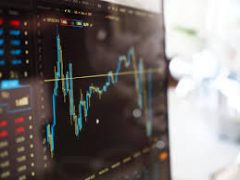Trade finance – network to network
SPONSORED INSIGHTS

Trade finance is at a pivotal moment
Trade finance indeed needs a network to network. Trade finance is probably the most collaborative and interdependent commercial activity on the planet. Yet for all the innately collaborative requirements, the reality is that market participants have challenges communicating with each other.
A complete redesign is required for trade finance to shed process and structure built up over literally centuries and risk a leap into a truly interconnected, immediate, deeply distributed networked state of being.
Part of the pickle trade finance has arrived at, is a result of technology itself and what was deemed important in the IT industry from the onset. IT systems take a long time to die and no industry knows this better than trade finance.
Today, it is at a pivotal moment and on the verge of a fantastic leap forward into a distributed, interconnected world that will have an enormous impact on global trade. What can be predicted?
Firstly, feature functionality is of course important, but gets solved over time. A product starts with a light core set of functionalities and over time and through user interaction a rich suite of functionality emerges.
What corporates will be looking to buy into going forward, is a distributed trade network; a network that once they have permissioned themselves into, contains all the capabilities they require to manage their balance sheet and optimise their working capital.
- A network where all the corporates counterparties are present, and services delivered by network participants that bring new business perspective.
- A network where trade finance models and solutions are easily accessible and more importantly can be safely tested for veracity, and where value is clearly and accurately expressed.
- A highly distributed network with a vast array of participants, all adding to and using the network to create and renew data in real time.
- A trade network that informs itself and makes that information available to any participant permissioned into the particular transaction at hand is precisely where trade can and will migrate to.
Trade finance needs an intelligent network operating in a frictionless and informative manner; not so much for its own growth and modernisation, as important as that most definitely is, but for the transformative effect it will have on businesses, production and manufacturing globally.
The ability for any business ecosystem to share data in an enriched and transparent fashion amongst participants, with the added confidence that trade finance will support their activity by efficiently allocating capital at any point in the cycle with innovative data backed financing, is the step forward all of trade finance knows it can and must take.
The good news is that such network is already available: Marco Polo (marcopolo.finance) is the largest and fastest growing trade and working capital finance network with over 25 members in the world. It is a joint undertaking between technology firms TradeIX and R3, the world’s leading financial institutions, and their corporate clients.
Get ready for the trade finance digital revolution, as profound as the industrial revolution.











































